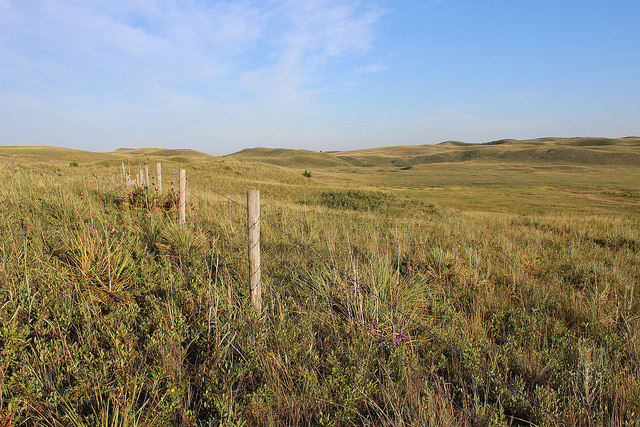10 Great things about the Sandhills

By Maria Nazos, University of Nebraska-Lincoln English PhD student, Great Plains Ecotourism Coalition
Why are our Sandhills worth talking about? Field representative for the Great Plains Eco-tourism Coalition, Sarah Sortum, and UNL Professor and Schultz Chair in Stratigraphy, David Loope, were kind enough to explain.
1. We’re at the beach (sort of)
“I like to think of being on a beach, watching the wind move the sand into ripples and other formations…that’s basically how a large part of the Sandhills were formed, just on a bigger scale,” Sortum said.
2. And then there were two…layers
There are two kinds of sand deposits. The lower level, called alluvial sand, is deposited by streams. This presence is indicative of a time when large streams were moving sand around after a large inland sea had receded. The other layer, which is usually found on top of the alluvial sand, is eolian, or wind blown, sand, Sortum said.
3. A unique geometry
In the eastern Sandhills there are linear dunes, with ridges of sand running parallel to each another. Sortum said other parts of the Sandhills have other types of dunes such as dome-like dunes or even sand sheets.
“All the different shapes/types of dunes are results of how the wind moved in different directions, velocities and what type of soils (in addition to sand) was present,” Sortum said. “This has created a wonderful mosaic of dunes that are usually more that just one ‘type’ or shape…giving beautiful character and uniqueness across the region.”
4. Water, water everywhere!
Sortum said people should consider the generous amount of water that the region boasts. “Without the Ogallala Aquifer, the complex and diverse vegetation (and animal species) probably would not be here,” she said.
5. Unlikely elements living in harmony
“It is a mind boggling contrast (low precipitation, dry sand and high evaporation vs. abundant and steady ground water) that finds natural harmony here,” said Sortum.
6. Our dunes hold their own
According to Dr. David Loope, our Sandhills are comparable in scale to those in the Sahara. Loope said he has seen dunes in various other countries, including in Argentina and China, but the Great Plains still has among the largest dunes.
7. An all-natural beauty
“Life has locked the dunes down,” said Loope. “They are the last really natural landscape we have in the Great Plains Region because irrigation systems don’t work on land that deep.”
8. Ranchers help
Loope said ranchers have done a wonderful job at helping to preserve this fragile terrain. “Too many hooves and mouths will destabilize the landscape,” Loope said. “Ranchers aren’t letting that happen. They move their cattle sometimes and rotate them so they have control over their grazing.”
9. Age remains a mystery
Like any gracefully aging beauty, the sand dunes have a mysterious history. “The age of the dune doesn’t tell you how long the sand has been moving across the Great Plains,” Loope said. “It could have been a million years—much longer than the age of a single dune.”
10. Patience is a virtue
When taking in the Sandhills, Sortum encourages viewers to be patient.
“No, they are not imposing like the peak of a high mountain, they do not have the lushness of a rainforest, nor do they astound one with deep canyons or high waterfalls. I believe to properly experience the Sandhills one must take a little time…” she said. “The peace and beauty here just tease the eye, but the full impact slowly seeps into you. For those with the patience, there is a steady strength in the Sandhills that both calms and empowers you and helps you connect to the other species we share our planet with.”
